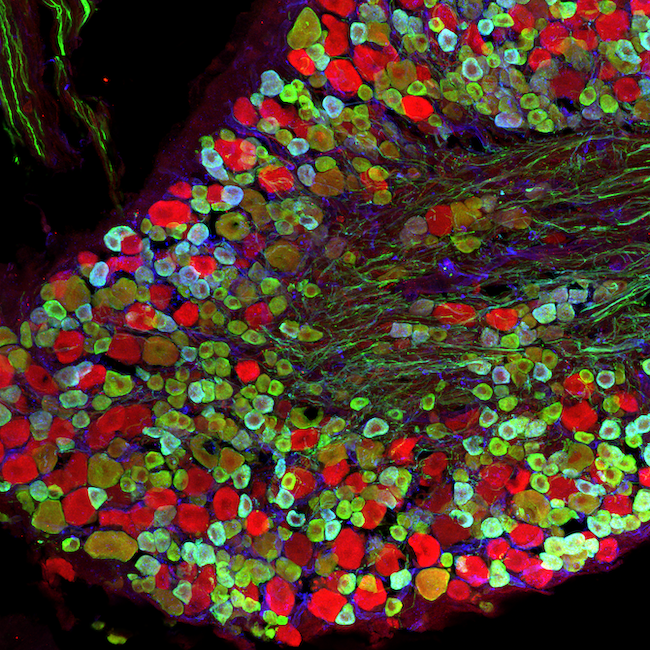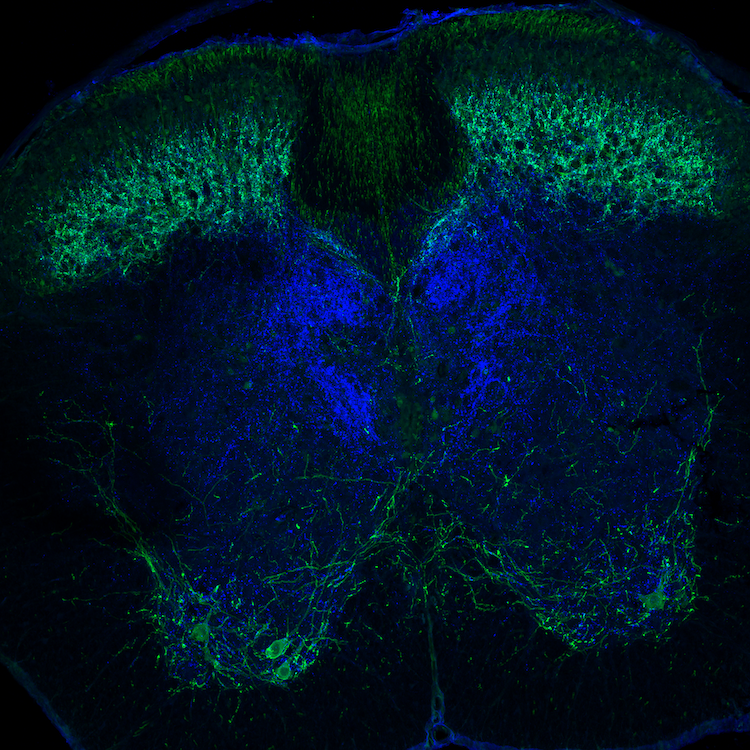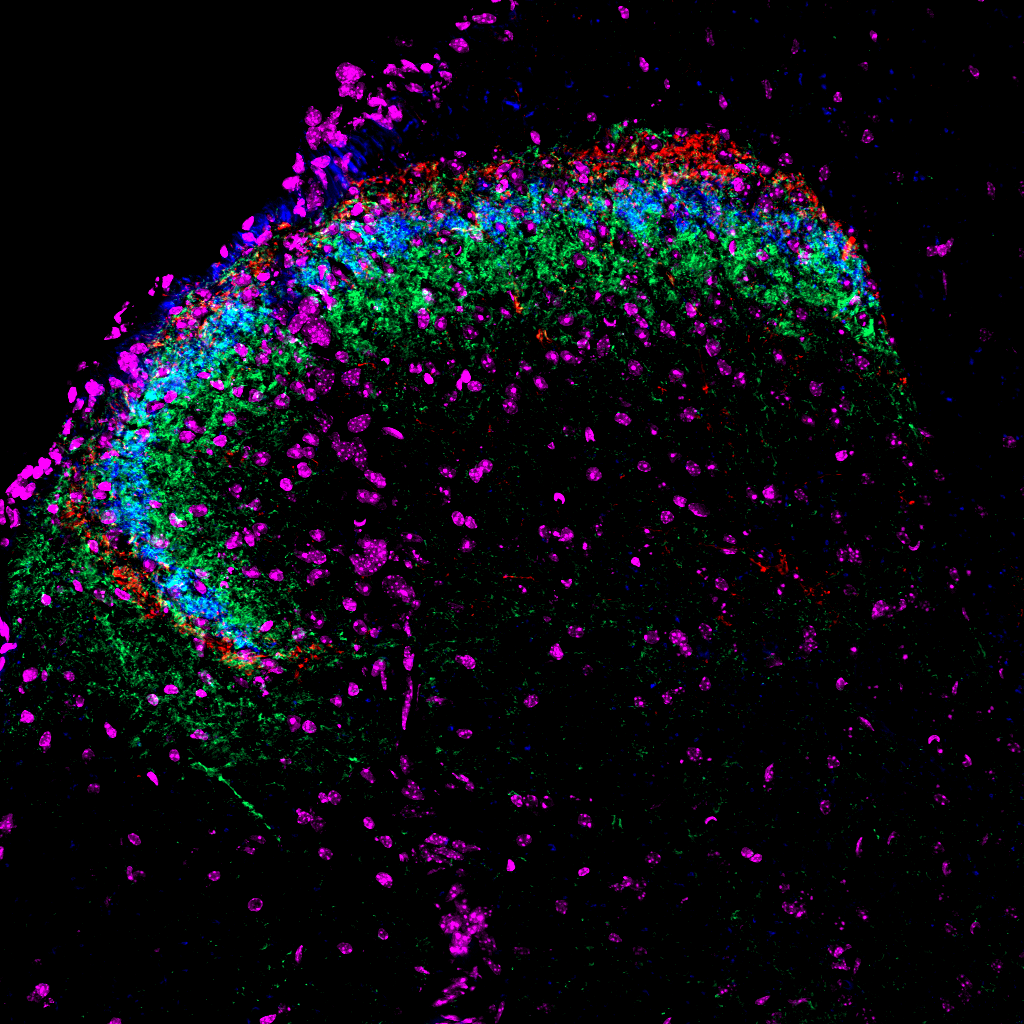
Body-Brain Circuits for Touch and Pain Sensation
We study the functional organization and plasticity of the somatosensory system
Our Research
Our senses evolved to detect and flexibly adapt to our ever-changing environment. Internal or behavioral state transitions, including ontogeny, stress, and metabolic flux can influence sensory processing and dramatically affect how we perceive and interact with our surroundings. Among the senses, somatosensation faces a unique challenge.
While the sensory receptors for our other primary senses are clustered together in specialized sensory organs conveniently close to the brain, somatosensory receptors are distributed throughout the body and must send their signals to the brain by way of the spinal cord.
Our goal is to elucidate fundamental principles of sensory encoding across the somatosensory system, and use this knowledge to reveal how internal states and sensory experience flexibly shape our sense of touch and pain.
To accomplish this, we combine a range of mouse molecular-genetic tools, large-scale in vivo electrophysiology, optogenetics, synaptic physiology, computational approaches, anatomy and behavior.









